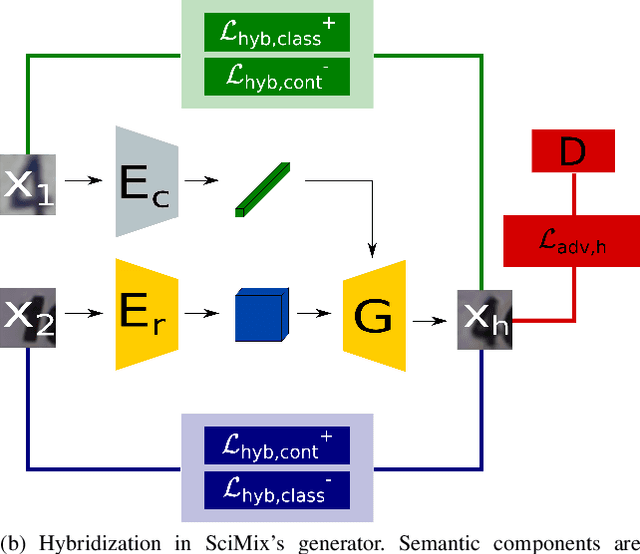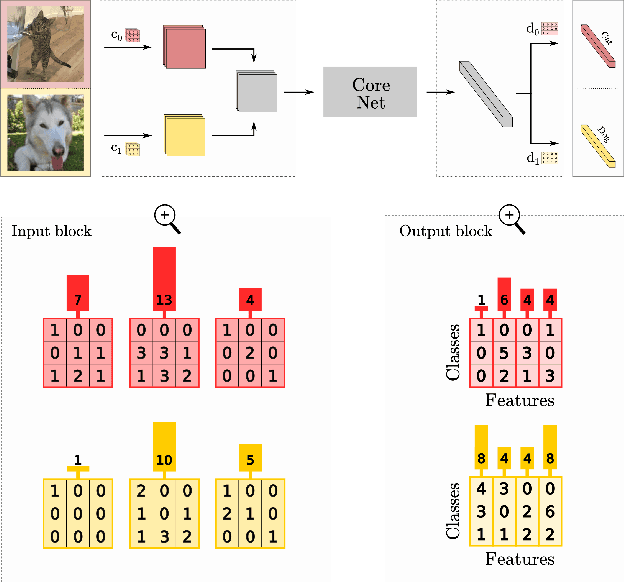Clément Masson
Swapping Semantic Contents for Mixing Images
May 20, 2022



Abstract:Deep architecture have proven capable of solving many tasks provided a sufficient amount of labeled data. In fact, the amount of available labeled data has become the principal bottleneck in low label settings such as Semi-Supervised Learning. Mixing Data Augmentations do not typically yield new labeled samples, as indiscriminately mixing contents creates between-class samples. In this work, we introduce the SciMix framework that can learn to generator to embed a semantic style code into image backgrounds, we obtain new mixing scheme for data augmentation. We then demonstrate that SciMix yields novel mixed samples that inherit many characteristics from their non-semantic parents. Afterwards, we verify those samples can be used to improve the performance semi-supervised frameworks like Mean Teacher or Fixmatch, and even fully supervised learning on a small labeled dataset.
Towards efficient feature sharing in MIMO architectures
May 20, 2022



Abstract:Multi-input multi-output architectures propose to train multiple subnetworks within one base network and then average the subnetwork predictions to benefit from ensembling for free. Despite some relative success, these architectures are wasteful in their use of parameters. Indeed, we highlight in this paper that the learned subnetwork fail to share even generic features which limits their applicability on smaller mobile and AR/VR devices. We posit this behavior stems from an ill-posed part of the multi-input multi-output framework. To solve this issue, we propose a novel unmixing step in MIMO architectures that allows subnetworks to properly share features. Preliminary experiments on CIFAR-100 show our adjustments allow feature sharing and improve model performance for small architectures.
Gated networks: an inventory
Dec 10, 2015



Abstract:Gated networks are networks that contain gating connections, in which the outputs of at least two neurons are multiplied. Initially, gated networks were used to learn relationships between two input sources, such as pixels from two images. More recently, they have been applied to learning activity recognition or multi-modal representations. The aims of this paper are threefold: 1) to explain the basic computations in gated networks to the non-expert, while adopting a standpoint that insists on their symmetric nature. 2) to serve as a quick reference guide to the recent literature, by providing an inventory of applications of these networks, as well as recent extensions to the basic architecture. 3) to suggest future research directions and applications.
 Add to Chrome
Add to Chrome Add to Firefox
Add to Firefox Add to Edge
Add to Edge